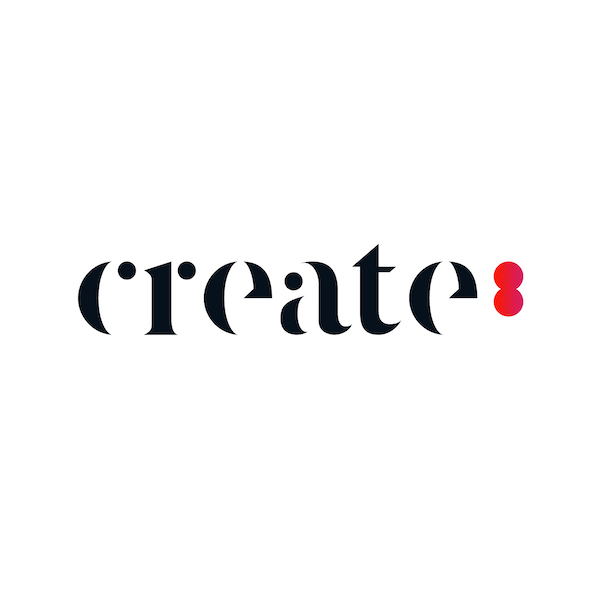10 Tips For Flawless Web Design From Leading Agency Create8

It’s the worst-kept secret in the digital sector: Create8 lives and breathes web design. Whether it’s the brilliantly garish or the clean and comforting, they love all websites equally – and the results speak for themselves.
This fellow Manchester agency has been doing the rounds long enough to know a thing or two about how sites convert customers. So, we sat down with them to get their views on what it takes to build one…
1. Plan first, design second
Okay, we really didn’t want to be those guys who state the obvious. But when it comes to jaw-dropping design work, it really doesn’t just happen overnight. If you want your business to have the best website, you need to put those hard hours into planning your approach as well as your execution.
Companies who build a plan before getting stuck in with the design fully understand how their website is going to work. This is known as creating the website’s architecture. It involves pulling together a wireframe to act as an outline of your website, so that you can appreciate the user experience and the journey they take after landing on your homepage.
2. Understand what’s popular and why
Your plan will also provide helpful insight into your target demographic, meaning your website hits the right notes with the people it needs to. At Create8, we make sure we’re on top of all the current web design trends. That way, we can understand why your competitors are heading in specific directions from a design standpoint. Knowing what’s popular and why it’s popular helps your business make wise decisions when designing for your specific audience. And it also helps you go that step further with your own style.
If you’re not building a website from scratch but tweaking an existing one, there are many brilliant auditing tools that allow you to visualise your website’s granular data too. This enables you to view the performance of popular keywords, and identify which ones to optimise in order to tick all those necessary SEO-related boxes.
3. Don’t neglect the nav
You’ve probably heard the phrase ‘user journey’ countless times already, but if you haven’t, it’s time to get familiar! The user journey relates to how your potential customers navigate your website before finding what they’re looking for.
Simplicity is essential. If someone comes to you for a product and spends even a couple of minutes looking for it, their experience of your site (and, by extension, you) won’t be a positive one. Our tip is to leave hide and seek in the playground and show people what they want from the very first moment they hit your site.
4. Put your brand front and centre
Having a website that doesn’t represent your brand is like not having a website at all. If you think that sounds a little drastic, trust us, it isn’t! Your branding is the difference between being unforgettable or forgotten – there isn’t much ground in between.
When someone lands on your site, they should be saying, “Oh, I know these guys” and not “I think I’ve seen them before”. If you don’t immediately gain this recognition, everything else you’ve done won’t matter. So, think about all the things that make your company special: your colours, logo, tone of voice… heck, even your grammar! It all counts.
5. Discover the joy of white space
Designers champion white space (that is, the blank areas of your website that aren’t taken up by pictures or text); it gives the user a chance to take in everything on the page, as well as offers a calming feel to a website. And after the past couple of years, that’s exactly what the consumer is looking for: chilled vibes – you heard it here first!
White space is something that certainly shouldn’t scare you. But if you think your website looks a little bare, ask someone impartial for an opinion. Chances are they’ll agree that the more space your website has to breathe, the better.
6. Avoid stock imagery
Top tip number six doesn’t need too much elaboration. Stock imagery has probably been used hundreds of times before – and that means you can easily be mistaken for someone else. That’s not what you want!
Invest whatever it costs to have some bespoke photos taken. Use those to capture the attention of consumers and show off your products or services. Bonus points if you can also incorporate elements of your brand, such as colours, values and style.
7. Keep jargon to the office
Of course, the words you choose are just as important as the images. The language you use and your tone of voice all contribute to your brand.
When it comes to your website, we need to stress that you’re building something for your clients or customers. Yes, you should beam with pride when you see the finished project, but it’s what your potential consumers think that will truly make the difference. That’s why we advise leaving all the jargon and technical talk at the door – don’t risk scaring away customers with language they don’t understand.
8. Know that typography is your friend
Of course, you can make those words have more punch by leveraging design. Using the right typography and fonts can work wonders when it comes to attracting and converting customers.
Typography isn’t just the typeface you select (like Calibri or Times New Roman). It’s everything about the text. For example, whether you go with italics or bold, and how much space you leave between lines – these all fall under the remit of typography. Similar to photography, hectic typography can distract the user from what you’re trying to say and put them off exploring further. It’s your friend, so utilise it.
9. Make mobile a priority
Once you’ve got your words, images and designs in place, it’s time to start the build. As mobile activity is responsible for approximately half the world’s online traffic, it’s pivotal that your web design works as well on mobile as it does on desktop.
Mobile optimisation isn’t a given; don’t just expect all your elements to work the same as they do on your laptop. You need to check every blade of digital grass before you commit to your project. Send it to a few different people on different devices and get their honest opinion. Alternatively, ask your web design agency to do the hard work.
10. Speak to your designer
And that brings us nicely on to our final tip: communicate often with your design agency. Web designers are great – trust us, we know plenty! In fact, we hire plenty, and they’re far from scary! So, when it comes to asking those questions that are burning deep inside you, let them out.
At Create8, we pride ourselves on our client relationships and make certain that we keep in touch with each customer throughout their project. A great website takes a lot of collaboration, and without knowing precisely what you have in mind, how can a designer ever build your dream website?
If you’re interested in learning more about anything you’ve read here, or how we could work together, visit Create8’s website. Reach out, send a message, or pick up the phone – despite how archaic it may sound, we like a good natter.




